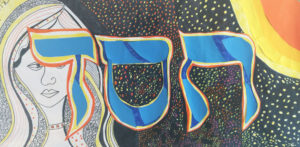Combining longstanding ethical traditions with modern insights into the way the mind works, one rabbi is providing Jewish groups with tools to encourage their members to cultivate traditional virtues.
 Ethics and judgment often seem to be inexorably intertwined — since taking an ethical stance involves judging what is right and appropriate and what is not. But sometimes judgment can actually be a roadblock to ethical development, when it prevents a person from fully understanding a situation and their own motives and choices. This is a core paradox that the Institute for Jewish Spirituality hopes to untangle by applying insights from mindfulness practice alongside traditional Jewish ethical insight.
Ethics and judgment often seem to be inexorably intertwined — since taking an ethical stance involves judging what is right and appropriate and what is not. But sometimes judgment can actually be a roadblock to ethical development, when it prevents a person from fully understanding a situation and their own motives and choices. This is a core paradox that the Institute for Jewish Spirituality hopes to untangle by applying insights from mindfulness practice alongside traditional Jewish ethical insight.
The term Tikkun Middot combines the Hebrew word for “repair” or “mending” with the word for ethical and spiritual principles; the director of the project, Rabbi Marc Margolius, roughly translates the term as “applied mindfulness.” It is connected to a strain of Jewish thought known as Mussar, which emerged in the 10th century and was a widespread movement in Eastern Europe by the 19th century. Margolius believes that many of Mussar’s insights have resonance with the growing contemporary interest in and scientific understanding of the benefits of mindfulness, as practiced in both religious and secular traditions.
In 2013, Margolius and his team began developing a program for Jewish synagogues, schools, and community organizations aimed at helping individuals and communities grow in their understanding and practice of ethics by combining mindfulness exercises with attention to middot. Over the next three years, members from 27 such communities followed a curriculum developed by Rabbi David Jaffe (and a parallel curriculum for parents and children written by Miki Young), which included texts for study, journaling exercises, goal-setting, and discussion.
“I am here”
The curriculum featured units focused on eight key virtues, all to be practiced with the curious, nonjudgmental attention that is a hallmark of mindfulness. “The idea of nurturing one’s full presence, meeting each moment as it arises, is deeply rooted in Jewish tradition,” Margolius says. “The Hebrew word meaning ‘I am here’ holds deep significance.” Working to withhold judgment at the start can allow for much better insight into the full situation: “Once I see my internal landscape more clearly, I have a better chance to catch myself in the moment, and intentionally make a choice other than one I might have made if I was on autopilot.”
After units on cultivating attention and growing in awareness of available choices, the curriculum covers eight middot, including patience, humility, trust, and order. The goal is for participants to see the virtues not as separate categories but as part of a continuous ethical whole. “One might compare these traits to colors in an artist’s palette,” Margolius says. “Each moment calls for discerning the appropriate combination of traits, and applying that mixture wisely in the particulars of each situation. Cultivating an awakened, ethical life is an art.”
To ensure that the project would continue to serve the communities after the initial curriculum ended, the project employed a “train the trainers” approach, offering the communities tools and resources that would serve them long beyond the end of the grant. “One of the intended consequences was to create a sustainable, self-renewing process within the communities where the people who were most intensely involved as participants became leaders and teachers themselves,” Margolius says.
Margolius has seen how the curriculum can infuse communal life with new vocabulary. Rather than simply seeing their communities as places to pray, study, or socialize, he hopes members will be able to look at their communities and say, “These are the people who help me be a better version of myself.”